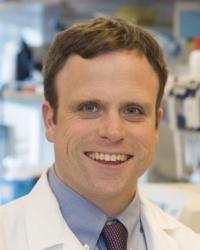
Dr. Mason’s laboratory builds and deploys biochemical and computational technologies to understand and engineer human and other genomes. He is Principal Investigator or co-Investigator on several NASA missions and projects. Some missions will discern the molecular basis of changes in the human body during long-term human space travel, including genetic, epigenetic, transcriptional, and metagenomic changes. One additional mission is optimizing a new method of space-based DNA nanopore sequencing, and his group is also creating other genetic technologies and algorithms that can measure nucleic acids in space. Notably, the nanopore-based sequencing methods he has pioneered with NASA/UCSF scientists will enable mid-mission, rapid pathogen diagnostics for astronauts, create new applications of sequencing for space exploration (exobiology), and to discover novel DNA/RNA base modifications.
1) The Biomolecule Sequencer (BSeq) Project with NASA
Our mission just completed the first-ever sequencing of DNA in space on the international space station in August-September 2016.
http://www.nasa.gov/mission_pages/station/research/experiments/2181.html
http://biorxiv.org/content/early/2016/09/27/077651
http://www.nasa.gov/mission_pages/station/research/news/dna_sequencing/
This was after a proof-of-principle experiment showed for the first time that is it indeed possible to sequence in zero gravity:
http://biorxiv.org/content/early/2015/12/10/032342
http://www.nature.com/news/zero-gravity-genomics-passes-first-test-1.18537
https://www.technologyreview.com/s/601669/now-theyre-sequencing-dna-in-outer-space/
2) The NASA Twins Study and Single-cell, Epigenetic Dynamics of Space Travel
Our lab was one of ten chosen by NASA to focus on a complete systems biology, molecular portrait of the impact of long-term space travel on the human body, leveraging a multi-omics approach leveraging the latest in genome technologies and computational methods. This includes a 19-time point, multi-tissue and microbiome monitoring across two years: 6 months before launch, 12 months in space, and 6 months after return to Earth. Assays include: phased whole genome sequencing (WGS), deep exome sequencing (WES), small and large RNA-sequencing, epigenome sequencing with whole genome bisulfite sequencing (WGBS) for methylation (mC) and hydroxy-methylation (hmC) changes, epitranscriptome profiling, proteomics (LC-MS), antibody titers, telomere length, metabolomics, microbiome, cognition, and vasculature measures.
https://www.nasa.gov/twins-study
http://www.nasa.gov/mission_pages/station/research/experiments/2104.html (our study)
Press coverage:
http://www.npr.org/sections/thetwo-way/2015/03/27/395536140/nasa-to-study-a-twin-in-space-and-his-brother-on-earth
http://weill.cornell.edu/news/news/2015/12/the-power-of-two.html
http://www.japantoday.com/category/health/view/space-study-nasa-and-jaxas-cosmic-quest-for-medicine-and-technology
We also have one other grant looking at cell-to-cell changes in epigenetics and chromatin (single cell ATAC-seq), which will use the NASA Twins samples as well as that of other astronauts:
https://www.nasa.gov/feature/nasa-nsbri-select-proposals-to-support-astronaut-health-on-long-duration-space-exploration
3) Medical Student Training for Space Genomics
Weill Cornell Medicine now has space mission training and data analytics courses for space experiments as a formal Area of Concentration (AOC) that medical and graduate students can take while getting their M.D or PhD.:
http://weill.cornell.edu/education/curriculum/aoc_summaries.html#Aerospace
4) Genome Engineering and Extremophiles
We are working to engineer complex environmental systems, microbiomes, and/or biofilms for protective purposes (http://bkbioreactor.com/ and http://bio.academany.org/) and also study extremophiles as models for unique adaptations for potential life in extreme environments that we might encounter on other worlds (http://www.extrememicrobiome.org/).
5) Space Genetics Education and Outreach
Many educational and outreach talks are given about this work, from elementary schools, high schools, and to conferences like ASHG, AGBT, and other venues like TEDMED. My TEDMED talk, “Discovering and designing genomes for Earth, Mars, and beyond,” is here:
http://www.tedmed.com/talks/show?id=528172
McIntyre ABR, Rizzardi L, Yu AM, Alexander N, Rosen GL, Botkin DJ, Stahl SS, John KK, Castro-Wallace SL, McGrath K, Burton AS, Feinberg AP, Mason CE. Nanopore Sequencing in Microgravity. Nature Partner Journals (npj) Microgravity 2016 (in press)
Li S, Garrett-Bakelman FE, Chung SS, Sanders MA, Hricik T, Rapaport F, Patel J, Dillon R, Vijay P, Brown AL, Perl AE, Cannon J, Bullinger L, Luger S, Becker M, Lewis ID, To LB, Delwel R, Löwenberg B, Döhner H, Döhner K, Guzman ML, Hassane DC, Roboz GJ, Grimwade D, Valk PJ, D'Andrea RJ, Carroll M, Park CY, Neuberg D, Levine R, Melnick AM, Mason CE. Distinct evolution and dynamics of epigenetic and genetic heterogeneity in acute myeloid leukemia. Nat Med 2016 22:792-9. PMID: 27322744
Pendleton M, Sebra R, Pang AW, Ummat A, Franzen O, Rausch T, Stütz AM, Stedman W, Anantharaman T, Hastie A, Dai H, Fritz MH, Cao H, Cohain A, Deikus G, Durrett RE, Blanchard SC, Altman R, Chin CS, Guo Y, Paxinos EE, Korbel JO, Darnell RB, McCombie WR, Kwok PY, Mason CE, Schadt EE, Bashir A. Assembly and diploid architecture of an individual human genome via single-molecule technologies. Nat Meth 2015 12:780-6. PMID: 26121404
Afshinnekoo E, Meydan C, Chowdhury S, Jaroudi D, Boyer C, Bernstein N, Maritz JM, Reeves D, Gandara J, Chhangawala S, Ahsanuddin S, Simmons A, Nessel T, Sundaresh B, Pereira E, Jorgensen E, Kolokotronis S, Kirchberger N, Garcia I, Gandara D, Dhanraj S, Nawrin T, Saletore Y, Alexander N, Vijay P, Hénaff EM, Zumbo P, Walsh M, O’Mullan GD, Tighe S, Dudley JT, Dunaif A, Ennis S, O’Halloran E, Magalhaes TR, Boone B, Jones AL, Muth TR, Paolantonio KS, Alter E, Schadt EE, Garbarino J, Prill RJ, Carlton JM, Levy S, Mason CE. Geospatial Resolution of Human and Bacterial Diversity from City-scale Metagenomics. Cell Systems 2015 172-87. PMID: 26594662
Li S, Tighe SW, Nicolet CM, Grove D, Levy S, Farmerie W, Viale A, Wright C, Schweitzer PA , Gao, Kim D, Boland J, Hicks B, Kim R, Chhangawala S, Jafari D, Raghavachari N, Gandara J, Garcia-Reyero N, Hendrickson C, Roberson D, Rosenfeld JA, Smith T, Underwood JG, Wang M, Zumbo P, Baldwin DA, Grills GS, Mason CE. Multi-Platform Assessment of Transcriptome Profiling Using RNA-Seq in the ABRF Next Generation Sequencing Study. Nat Biotech 2014 32:915-25. PMID: 25150837
Pan X, Durrett RE, Zhu H, Tanaka Y, Li Y, Zi X, Marjani SL, Euskirchen G, Ma C, LaMotte RH, Park I-H, Snyder M, Mason CE, Weissman SM. Two methods for full-length RNA-seq for low quantities of cells and single cells. Proc Nat Acad Sci 2013 110:594-9. PMID: 23267071
